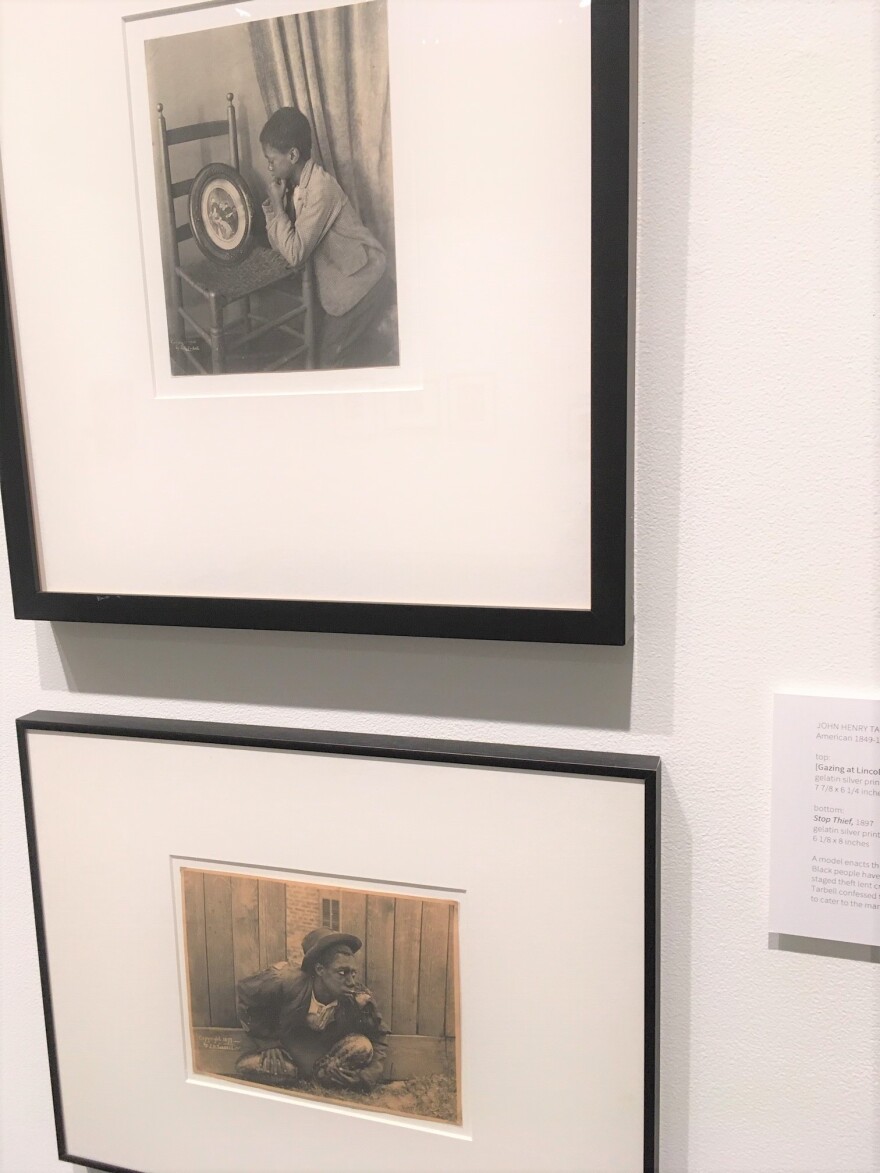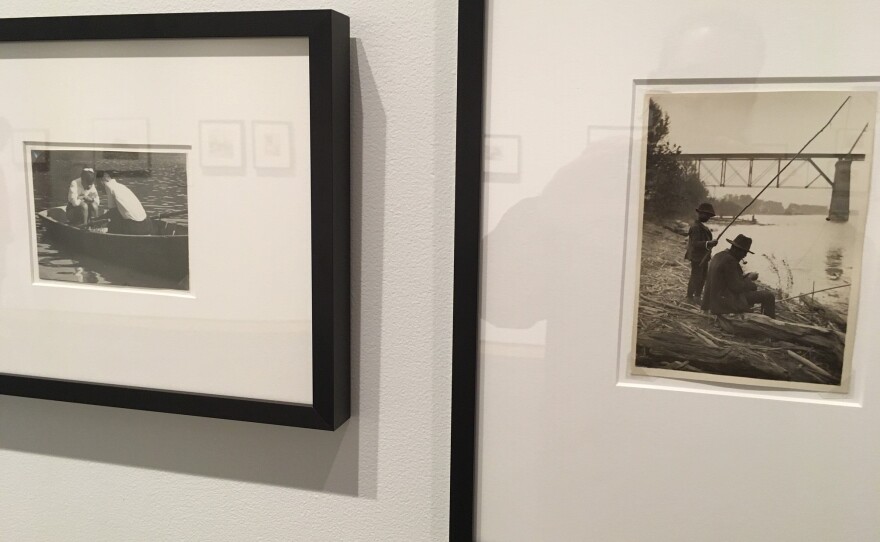A couple dancing at a house party. Children playing in a city street. A silent protest in New York City. There are just some of the photographs documenting every day African American life during the Jim Crow era on display at Syracuse University’s Shaffer Art Gallery.
The nearly 150 photos from the George Rinhart Collection reveal the paradoxes of depicting black subjects during the post slavery period and pre civil rights movement.

The Jim Crow era was synonymous with segregation, but exhibit curator and Associate Professor of African American history at SU Joan Bryant says that’s not what the photos aim to show…
"You don't see the signs saying 'colored water fountains' and you don't see all the lynchings. But you see a different kind of complexity that shows the different currents; black agency, as well as repression, and just ordinary life," she said.
"There are other examples of photography and iconography that attempt to show good old days of slavery. At the same time, you have black aspirations arguing that there's a new Negro on the horizon. You have such divergent conceptions of what a black photographic subject should look like."
Most of the photos come from the first news photo service called Underwood and Underwood.
"They are examples of what circulated in the media. Underwood and Underwood would rent photographs to anybody; local newspapers, the NAACP Crisis Magazine, newspapers around the country. Although it's the Jim Crow era, one of the things that is most striking is how varied the images are."
One of the themes is Cities, and Bryant says the photos show different experiences.
"The era of the new Negro, and the mass migrations from the rural south to the urban north, and Harlem represented that," she said.

"There are different images of cities, from Savannah, Georgia to the dirt streets of St. Petersburg, Florida. People are also migrating from the rural south to the urban south, and they're going to work at the resorts, living in what they called Negro shacks."
But as she did her research for the exhibit, Bryant discovered an ugly side to seemingly ordinary photos.
"One of the things that was most striking, that even if the photograph was not disparaging, the caption would tell you what to see," she said, pointing to an example.
"This is a long, handwritten caption describing this group as the 'ex-slave association, praying for their former masters and mistresses whom they loved, reminiscing about the good old days of slavery when they wanted for nothing'."
"I was shocked," Bryant said. "This picture circulated, but this story also circulated. This WAS the Ex-slave Association. They met annually..."
To further highlight the complexity of the period, Bryan points out another photo called “stop thief.”

"It's supposed to depict a boy stealing watermelon. Photographer John Tarbell from Massachusetts writes about his experiences photographing Negroes in the south. He said he took photographs like this watermelon thief because that's what the market desired. He said he had to do that in order to make money, although he preferred to depict black people in a more favorable way, and I guess the boy gazing at [Abraham] Lincoln was an example of what he thought would be a favorable image."
Bryant says one way African Americans tried to control their images was through studio portraits. Frederick Douglass famously had one taken everywhere he spoke, and the idea resonated with many. But Bryant points out a few examples in the exhibit that prove there are exceptions to the notion of control.
"This is a lovely street photograph of a man clearly engaging the photographer. What struck me about this portrait was the title the photographer gave, it's called 'Dusky Stevedor.' I doubt the man would call himself the 'Dusky Stevedor.' Regardless of what the experience was in the photograph, in the afterlife, the photographer has control."
Black Subjects in Modern Media Photography: Works from the George R. Rinhart Collection runs through March 13th on the first floor of SU’s Shaffer Art Gallery.













